NAD IV therapy has gained attention for its potential to enhance energy, support cognitive function, and promote overall wellness. NAD+ (Nicotinamide Adenine Dinucleotide) is a coenzyme naturally found in all living cells, crucial for energy production, DNA repair, and maintaining cellular health. However, as with any medical treatment, it’s important to be fully aware of …
NAD IV therapy has gained attention for its potential to enhance energy, support cognitive function, and promote overall wellness. NAD+ (Nicotinamide Adenine Dinucleotide) is a coenzyme naturally found in all living cells, crucial for energy production, DNA repair, and maintaining cellular health. However, as with any medical treatment, it’s important to be fully aware of possible side effects and take the necessary precautions. Below, we’ll explore what NAD IV therapy involves, common and rare side effects, and the measures Elite Vita takes to ensure a safe experience.
What is NAD IV Therapy?
NAD IV therapy is a method of delivering NAD+ directly into the bloodstream, maximizing its absorption and allowing for immediate benefits. NAD+ is an essential coenzyme in energy metabolism and cell repair. However, levels of NAD+ naturally decline with age, contributing to energy depletion, cognitive slowdown, and visible signs of aging. By replenishing NAD+ levels, IV therapy aims to restore the body’s natural balance and promote cellular health.
Understanding NAD+ and Its Role in the Body
NAD+ is central to the body’s metabolism, facilitating the conversion of nutrients into cellular energy (ATP). It’s also critical in activating proteins that repair DNA and regulate cellular health, such as sirtuins, which have been linked to anti-aging processes. Low NAD+ levels can lead to decreased vitality and a lower resistance to physical and cognitive stress. Many people turn to NAD IV therapy to support these essential functions and enhance their quality of life.
How NAD IV Therapy Works?
Administered intravenously, NAD IV therapy bypasses the digestive system, delivering NAD+ directly to the bloodstream. This process ensures rapid absorption, making it far more effective than oral supplements or topical applications, which are often subject to lower bioavailability. Patients typically receive NAD IV therapy in a clinical setting under professional supervision, with a tailored infusion schedule based on their needs and health goals. The infusion typically lasts between one and two hours, during which patients can relax as the solution enters their bloodstream.
Common Side Effects of NAD IV Therapy
NAD IV therapy is widely regarded as safe, but as with many health treatments, some individuals may experience mild side effects. These effects, which typically occur during or shortly after the infusion, are usually temporary and easily manageable. Being aware of these common reactions can help you prepare and feel more comfortable with the process, allowing for a smoother experience and quicker recovery.
Initial Side Effects During and After Infusion
It’s not uncommon for patients to feel a few mild, initial side effects during or immediately following NAD IV therapy. Most of these reactions are a normal part of the body adjusting to the influx of NAD+ and generally subside quickly.
Nausea: As the NAD+ infusion enters the bloodstream, it can sometimes cause mild nausea. This reaction occurs as the body adjusts to the increased NAD+ levels, which can impact metabolism and cause slight discomfort in some individuals. Slowing the infusion rate or taking small sips of water can often alleviate this sensation.
Headache: Some patients report headaches, likely due to the rapid boost in cellular activity triggered by NAD+. Staying hydrated before, during, and after your session can help reduce the likelihood of experiencing headaches, as can adjusting the pace of the infusion if needed.
Flushing or Warmth: A feeling of warmth or a light flush across the face and neck is another common response during NAD IV therapy. This occurs as blood vessels dilate in response to the infusion and typically fades within a few minutes. Informing your practitioner if you experience this sensation allows them to adjust the treatment rate for a more comfortable experience.
Mild Fatigue: Although NAD+ is known to increase energy levels, the initial infusion may cause mild fatigue as your body processes the new NAD+ levels. This temporary tiredness usually subsides within a few hours, and rest after your session can help your body adjust smoothly.
Injection Site Reactions
As with any intravenous treatment, NAD IV therapy may cause mild reactions at the injection site. These effects are usually minor and temporary but are useful to be aware of before beginning treatment.
Redness and Swelling: Redness or slight swelling around the insertion site is a common response after IV treatment. This reaction occurs as the skin and underlying tissue adjust to the needle’s entry, leading to a minor inflammatory response. Redness and swelling generally subside within a day or two as the body recovers from the infusion.
Tenderness or Discomfort: Mild tenderness at the injection site is also common, particularly for individuals new to IV therapy or those with sensitive skin. This tenderness typically results from the body’s natural response to the infusion process and usually fades within 24–48 hours.
Bruising at the Injection Site: Some patients may experience slight bruising where the IV was inserted. This is typically a harmless side effect of minor blood vessel trauma during the needle insertion and is more likely to occur in individuals with sensitive or thin skin. Bruising generally resolves on its own in a few days without intervention.
Digestive Disturbances
While NAD IV therapy bypasses the digestive system by delivering NAD+ directly into the bloodstream, some patients may still experience mild digestive disturbances, particularly during the initial sessions. These side effects are generally short-lived and manageable but understanding their potential causes and how they may present can help set expectations.
Mild Nausea: During or shortly after an NAD IV infusion, some patients report mild nausea. This queasiness often arises as the body adjusts to the increased NAD+ levels, which can temporarily influence metabolic and digestive responses. The sensation is usually brief and resolves shortly after the session. Staying hydrated before and after the treatment can often help minimize this response.
Abdominal Discomfort or Diarrhea: Though rare, some patients may experience mild abdominal discomfort or loose stools following an infusion. This reaction may be related to the body’s response to heightened cellular activity as it metabolizes the increased NAD+ levels, which can occasionally impact the digestive tract. Most individuals find that any abdominal discomfort subsides within a few hours without the need for additional treatment.
Rare but Possible Side Effects of NAD IV Therapy
Though NAD IV therapy is generally well-tolerated, a few patients may experience less common side effects. These reactions, while mild and temporary, can occasionally arise as the body adjusts to the infusion. Understanding these rarer effects can help you prepare and manage them effectively should they occur.
Dizziness and Lightheadedness
A small percentage of patients report feelings of dizziness or lightheadedness during or shortly after an NAD IV infusion. This reaction is typically due to the body’s rapid adaptation to elevated NAD+ levels, which can temporarily affect cellular and metabolic processes.
Why It Happens: The sensation of dizziness or lightheadedness may be linked to slight, temporary fluctuations in blood pressure, which can occur as NAD+ levels are increased intravenously. The boost in NAD+ can stimulate increased cellular activity, sometimes causing the body to feel momentarily unsteady as it adjusts.
How to Manage It: Proper hydration before and after the session can often help prevent lightheadedness. Eating a light snack prior to the infusion may also stabilize blood sugar levels and reduce the likelihood of dizziness. Should dizziness arise during the session, inform your provider immediately so they can slow the infusion rate, giving your body more time to adjust comfortably.
Fatigue and Lethargy
Though NAD+ is known for its energy-boosting properties, some individuals experience mild fatigue following their session. This paradoxical response typically occurs as the body adjusts to heightened NAD+ levels and the increased cellular demand for energy.
Reason for Fatigue: When NAD+ levels rise, cellular activities ramp up, which can create a temporary increase in energy demand that leaves some feeling slightly drained. This fatigue is generally short-lived and fades as the body acclimates to the new NAD+ levels, usually resolving within a day or two.
Suggestions for Overcoming Fatigue: After your infusion, plan for a relaxed day with minimal physical exertion to give your body a chance to rest. Staying hydrated and engaging in light, gentle activities, such as walking or stretching, can help re-energize you without over-taxing your system.
Mood Changes and Temporary Brain Fog
While NAD IV therapy is often associated with improvements in mood and cognitive clarity over time, a few patients report temporary brain fog or subtle mood shifts immediately following an infusion. These effects are uncommon and tend to subside within hours as the body adapts to the therapy.
Understanding Mood Changes: NAD+ plays a role in regulating neurotransmitter production, which impacts mood and mental clarity. The infusion may influence these neurotransmitter levels temporarily, particularly if the patient is new to NAD IV therapy, resulting in brief moments of fogginess or mood fluctuation..
Managing Brain Fog: Giving your body time to rest and adjust can be beneficial. Staying hydrated and ensuring you’re well-rested can alleviate these effects. Many patients find that a brief nap or quiet time after their session helps them regain clarity and feel back to normal.
Addressing Concerns: Is NAD IV Therapy Right for You?
While NAD IV therapy offers many promising benefits, it’s essential to determine if it aligns with your unique health needs and goals. Every individual responds differently to treatment, and certain medical conditions, allergies, or lifestyle factors can influence the body’s reaction to NAD IV therapy. Consulting with a healthcare provider is strongly recommended to ensure that this therapy suits your personal health profile and wellness objectives.
Who Should Avoid NAD IV Therapy?
Though NAD IV therapy is generally safe for most individuals, it may not be suitable for everyone. Understanding potential contraindications and knowing when to approach this therapy cautiously is vital for ensuring a safe and effective experience.
Allergies and Sensitivities: If you have known allergies or sensitivities to the components of the NAD+ solution, discussing these with your provider is essential. In rare cases, individuals may react to the NAD+ solution itself or additives within it. Alerting your provider about any allergies, particularly to vitamins, preservatives, or IV materials, enables them to prepare a solution tailored to your needs or recommend alternatives.
Specific Health Conditions: NAD IV therapy may place demands on the body that aren’t suitable for individuals with certain chronic health conditions. Those with severe heart disease, kidney dysfunction, or liver issues should approach NAD IV therapy with caution. NAD+ can increase cellular energy production and metabolic activity, which may place stress on the cardiovascular or renal systems. Consulting with a physician can help tailor the therapy or explore alternative wellness solutions that align better with specific health conditions.
Pregnancy and Nursing: Women who are pregnant or breastfeeding are generally advised to avoid NAD IV therapy, as research on its effects in these populations is limited. The introduction of high NAD+ levels can alter cellular processes, which may have unknown effects on fetal development or nursing infants. It’s recommended to consult a healthcare provider to explore safe, alternative therapies for energy or cognitive support during pregnancy and lactation.
Tips for Minimizing Side Effects
Proper preparation and aftercare can significantly enhance your experience with NAD IV therapy, helping to reduce potential side effects and ensuring that you gain the maximum benefits from each session. Simple practices like staying hydrated, maintaining a balanced diet, and engaging in gentle post-treatment care can make a noticeable difference in how you feel during and after the therapy.
Preparing for Your NAD IV Therapy Session
How you prepare for your NAD IV therapy session can directly influence your comfort and how well your body adjusts to the infusion. Following these guidelines can help reduce common side effects and optimize the effectiveness of the therapy:
Stay Hydrated: Drinking plenty of water before your session helps maintain stable blood pressure and reduces the likelihood of headaches, dizziness, and nausea. Aim to drink water consistently throughout the day before your appointment to ensure you’re well-hydrated.
Have a Light, Nutritious Meal:: Eating a light meal about an hour before your session can prevent nausea by stabilizing blood sugar and avoiding hunger during the infusion. Choose foods that are easy on the stomach—fruits, whole grains, and lean proteins are excellent options. Avoid heavy, greasy, or spicy foods, which might cause discomfort.
Wear Comfortable Clothing: Wear loose-fitting, comfortable clothing that allows for easy movement and relaxation. Since NAD IV therapy can take up to two hours, dressing comfortably will make it easier to sit or recline throughout the session without feeling restricted.
Post-Treatment Care
Following NAD IV therapy, your body may need some recovery time as it adjusts to the NAD+ boost. Incorporating a few easy post-treatment practices can help minimize any lingering side effects and support a smooth transition to the therapy’s benefits.
Rest and Relax: While many patients feel energized immediately after the infusion, it’s not uncommon to experience mild fatigue as your body adapts. Plan for some downtime after your session to rest and recharge, allowing your body to integrate the effects of NAD+ fully. Avoid high-intensity or strenuous activities for the remainder of the day.
Continue Hydrating: Staying hydrated after the treatment helps flush out any metabolic byproducts and reduces the risk of post-treatment headaches. Hydration also supports NAD+ absorption and enhances recovery, so keep drinking water steadily in the hours following your session.
Choose Light, Nutritious Foods: Nourish your body with easily digestible, nutrient-rich foods that support cellular recovery and energy, such as fruits, vegetables, and lean proteins. Avoid alcohol for at least 24 hours post-treatment, as it can interfere with NAD+ absorption and may amplify any mild side effects.
NAD IV therapy is a promising option for enhancing energy, cognitive clarity, and overall wellness by delivering the coenzyme NAD+ directly into the bloodstream, where it supports cellular energy production and repair. While NAD IV therapy offers unique benefits, understanding potential side effects—from common reactions like mild nausea and headaches to rarer effects such as lightheadedness or temporary fatigue—helps ensure a safe, informed experience. At Elite Vita, we prioritize client safety and satisfaction, offering personalized protocols, professional supervision, and guidance on pre- and post-treatment care. Consulting with our experts allows us to address your individual health needs, discuss any contraindications, and provide tips to minimize side effects, maximizing the therapy’s potential. With careful preparation and expert support, NAD IV therapy can be a powerful addition to your wellness routine, offering a new level of vitality and well-being.














